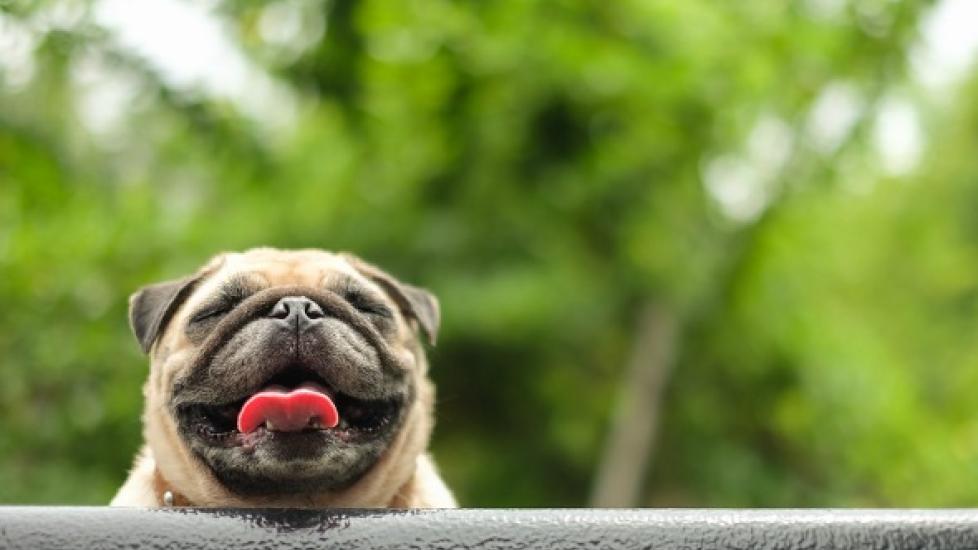Breathless with Love: Understanding and Addressing Noisy Dog Respiration
The gentle snores of a sleeping canine companion may be music to our ears, but when breathing becomes noisy or labored during waking hours, it’s time to pay attention. Excessive noise while inhaling or exhaling can signify various health issues that range from mild irritation to serious conditions requiring veterinary intervention. As pet owners, we must learn to recognize the signs, understand their implications, and take appropriate action to ensure our furry friends breathe easy once again. Let us delve into the world of noisy dog respiration, exploring its causes, symptoms, and how we can help our beloved pooches find relief.
Understanding Canine Nasal Nuisance
Just as humans experience respiratory difficulties at times, dogs too can face challenges with airflow through their nares (nostrils). The most common cause of noisy breathing is simple—an irritant or blockage within the nasal passages. This might include allergies, foreign objects like toys or food particles, or even excessive hair due to shedding cycles. In such cases, the issue often resolves on its own after some time or with minimal intervention.
However, other reasons for noisome nostril noises are more concerning. For instance, brachycephalic breeds like Bulldogs and Pugs have shorter faces that can lead to anatomical abnormalities affecting airways. These “brachy” dogs often suffer from elongated soft palate syndrome where part of the throat tissue extends further than normal, causing obstruction. Similarly, tracheal collapse—a condition where the cartilaginous rings around the windpipe weaken and flatten—can also contribute to audible respirations. Both these conditions typically require surgical correction under veterinary guidance.
Recognizing the Signs
It’s crucial to know what to look out for so you can identify potential problems early on. Some telltale signs of noisy dog breathing include:
- Rattling Sounds: A raspy wheeze or gurgle indicates narrowed passageways within your pup’s respiratory system.
- Open-Mouth Panting: If your normally cool-headed hound starts panting heavily with mouth agape despite not being overheated, this could signal distress caused by poor oxygen intake.
- Frequent Sneezing Spells: While sneezes themselves aren’t necessarily problematic, persistent bouts accompanied by discharge suggest underlying inflammation or infection.
- Reluctance to Exercise: Your usually energetic sidekick might start avoiding physical activities if exertion exacerbates difficulty breathing.
- Labored Effort: Watch for increased effort taken just to breathe; this includes rapid chest movements without corresponding air exchange.
- Weight Gain/Loss: Changes in appetite leading to significant shifts in weight could point towards hormonal imbalances which affect metabolism and energy levels needed for proper lung function.
Providing Comfort and Care
If you notice any of these red flags, don’t panic! Instead, follow these steps:
- Observe Closely: Keep track of frequency and severity of symptoms over several days before making assumptions about causality.
- Environment Check: Eliminate possible irritants from your home environment such as dust mites, mold spores, strong chemicals, etc.
- Regular Grooming: Brush excess hair off your longhaired friend regularly to prevent clogging up those delicate nasal pathways.
- Consult Veterinarian: Schedule an appointment with your trusted vet who will perform a thorough examination including blood work if necessary. They may prescribe medications for allergies or infections until they determine whether surgery is required down the line.
- Monitor Diet: Adjust dietary needs based upon recommendations provided by professionals since certain foods can trigger allergic reactions worsening already existing conditions related to noisy breathing episodes among pets susceptible thereto.
- Stay Calm & Supportive: Remember that anxious behavior patterns exhibited by animals experiencing discomfort only serve exacerbate matters further; thus providing reassurance throughout treatment processes goes far beyond mere comfort measures alone!
Conclusion
In conclusion, recognizing and addressing noisy dog respiration requires patience coupled with vigilance on behalf both owner AND veterinarian alike ensuring optimal outcomes achieved via collaborative efforts undertaken together seeking solutions tailored specifically meet individual animal’s unique requirements along way forward toward healing journey ahead yet still lies ahead indeed!
